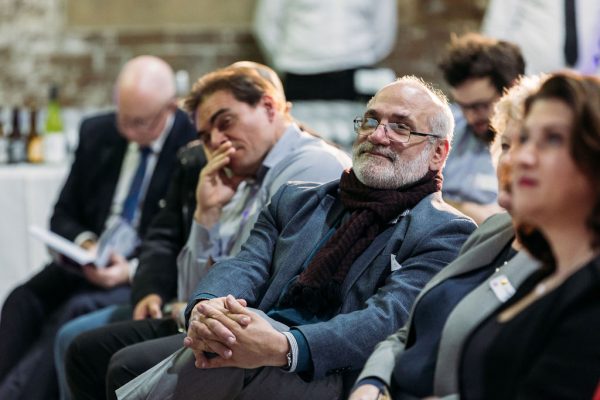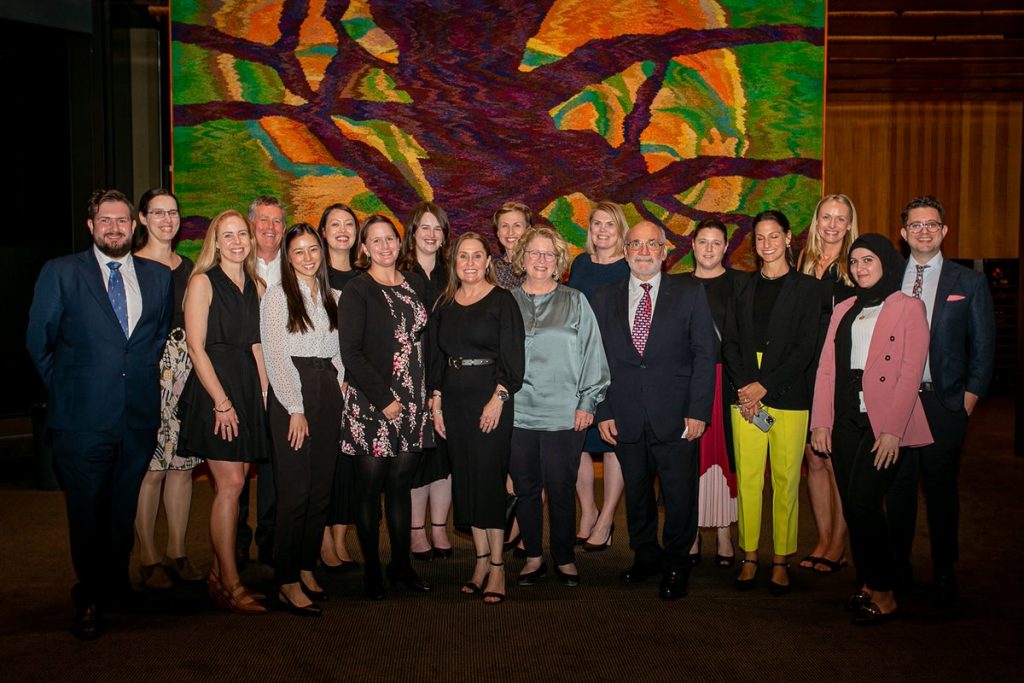Game, set and match
Outgoing Executive Director Tony Penna reflects on a decade of teamwork-driven triumphs at the Office for Health and Medical Research (OHMR).
A few nights ago, my son and I were cheering on our favourite football team, the Western Sydney Wanderers, as they weaved their magic on the field. My son pointed out the remarkable chemistry between the players – an invisible bond guiding their actions and decisions. His observation struck a chord with me, particularly as I draw close to my retirement this June after 10 years as Executive Director of the Office for Health and Medical Research (OHMR).
It dawned on me that this trust and collaboration he noticed among the Wanderers is the same spirit I’ve always aimed to foster in my leadership roles. I’m convinced this has been the secret sauce behind OHMR’s many victories over the past decade, and it will be the driving force of its continued success.

Scoring goals together
In the last decade, our team has made impressive strides, pushing the boundaries of health and medical research for NSW. We’ve championed innovative therapies – from viral vectors and RNA to phage therapy – with potential to treat, and even cure, genetic diseases, cancers, antimicrobial-resistant infections and many other serious health conditions. We’ve launched ambitious grant programs like the Translational Research Grants Scheme and secured a remarkable $150 million for cardiovascular research. We also fund an Early-Mid Career Grant Program which, importantly, supports the development of emerging leaders ready to excel in rapidly expanding fields of medical research.
In 2013 we launched the Medical Devices Fund which encourages and supports investment in the development and commercialisation of medical devices in NSW by removing barriers to commercialisation and allowing for leverage of other funding. Over the last 10 years’ the recipients of this funding have had a direct impact on health outcomes for the state by developing and commercialising innovative, cost-effective medical devices which are of clear economic benefit to the state.
We went further, and in 2014 we launched the Commercialisation Training Program which paved the way for researchers who wanted to commercialise their research. The program accelerates innovative ideas that can revolutionise the healthcare sector, improve patient outcomes, and provide economic opportunities for budding health tech businesses in NSW. Today, this program stands as the most successful training course of its kind in Australia. It has produced 94 graduates (and counting), who have collectively launched more than 19 companies and raised over $55 million in grants and private investments to bring their ideas to fruition.
During the COVID-19 crisis, we pushed ourselves further by establishing the COVID Research Program, demonstrating the feats possible in a condensed timespan when we put collaboration at the core of our efforts. Meanwhile, the introduction of the Research Ethics and Governance Information System (REGIS) has boosted NSW’s reputation as a national leader in research, promoting transparency and efficiency.
We’ve also been instrumental in improving clinical trials by creating a one-stop-shop for investigators, setting up ethics committees for early phase trials, and implementing a state-wide Clinical Trial Management System. This initiative secured a substantial federal grant to expand these trials to rural, regional, and remote areas of NSW and ACT – helping make sure no community is left behind.

Setting up for the next play
While it’s a great time for me to look back at everything that has been achieved, I also look to the future of OHMR with excitement and optimism.
The recent establishment of the Clinical Innovation and Research division within the NSW Ministry of Health – incorporating both OHMR and the Agency for Clinical Innovation – represents a significant leap forward. Under the leadership of Deputy Secretary Adjunct Professor Jean-Frédéric Levesque, I’m confident this new division will continue to transform and propel NSW’s research and innovation.
Moving forward, OHMR is set to strengthen its presence on all fronts – local, national and international. We’ll be active participants in high-profile, global events like BIO, while continually backing important initiatives such as the Medical Devices Fund and NSW Health’s Commercialisation Training Program. We’re equally committed to expanding our reach and building capability in remote, regional, and rural areas across NSW.
In the coming month, as I prepare to pass the ball to my successor, I look forward to collaborating closely with Jean-Frédéric. Our focus will be on laying a solid foundation for the continued growth and success of the broader NSW health ecosystem and reaffirming OHMR’s strategic position within the new division.
Above all, I want to use this opportunity to express my heartfelt thanks to my team. Your dedication and spirit have made OHMR a standout in health and medical research. We’ve shared a special connection – that finely tuned, collaborative instinct of what to do and when. That’s our legacy, and it’s what will drive you to future victories.
From my early career in paediatric pharmacology, through various leadership roles – culminating with heading the then-newly formed OHMR a decade ago – I feel incredibly grateful for the career I’ve had. It has been as rewarding as it has been challenging. Now, I’m looking forward to spending more time with my family, and in my hobbies – sketching, fishing, cooking, and yes, watching football! But my passion for the health and future of NSW won’t fade – rest assured, I’ll be cheering you all on from the stands.
Updated 2 years ago